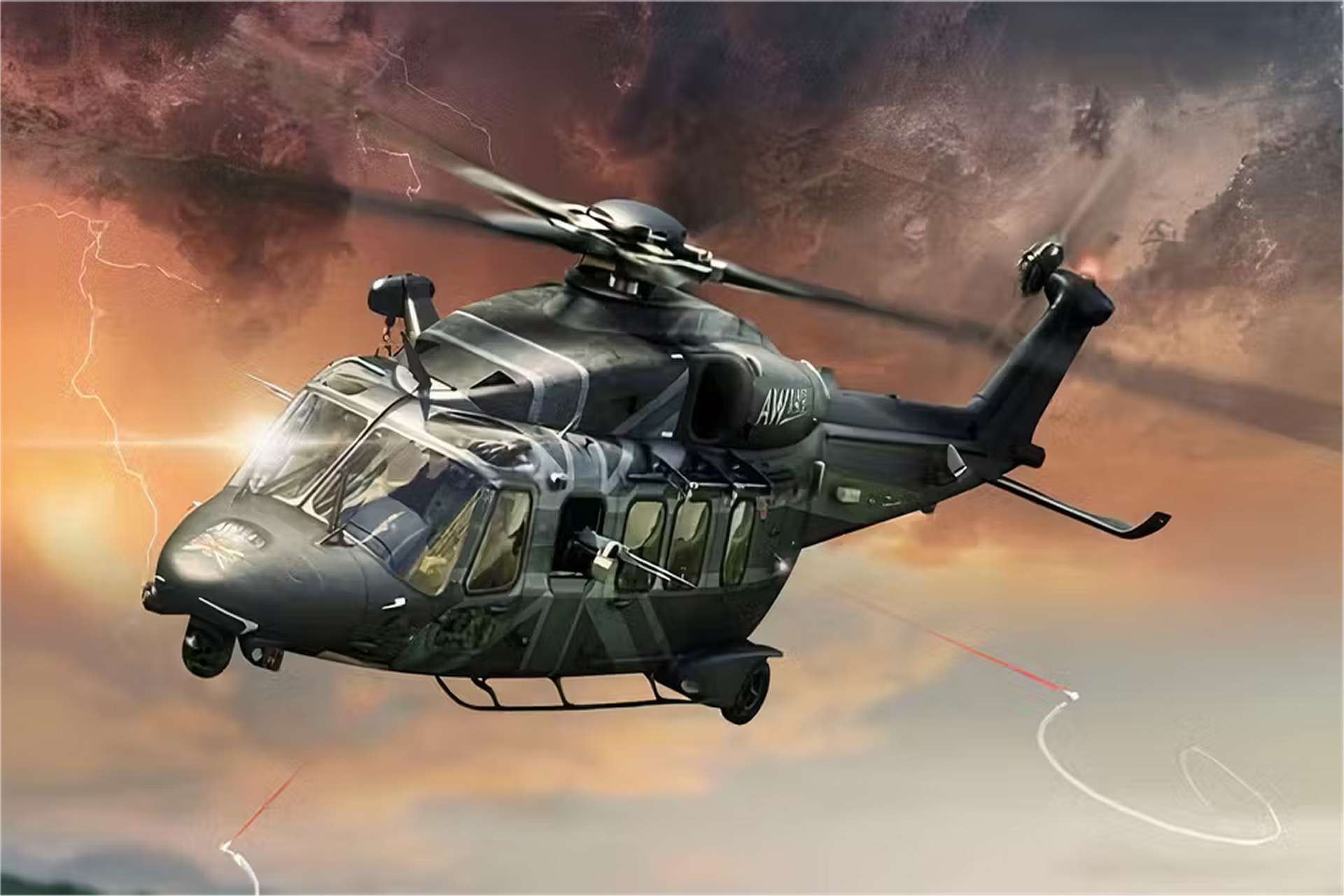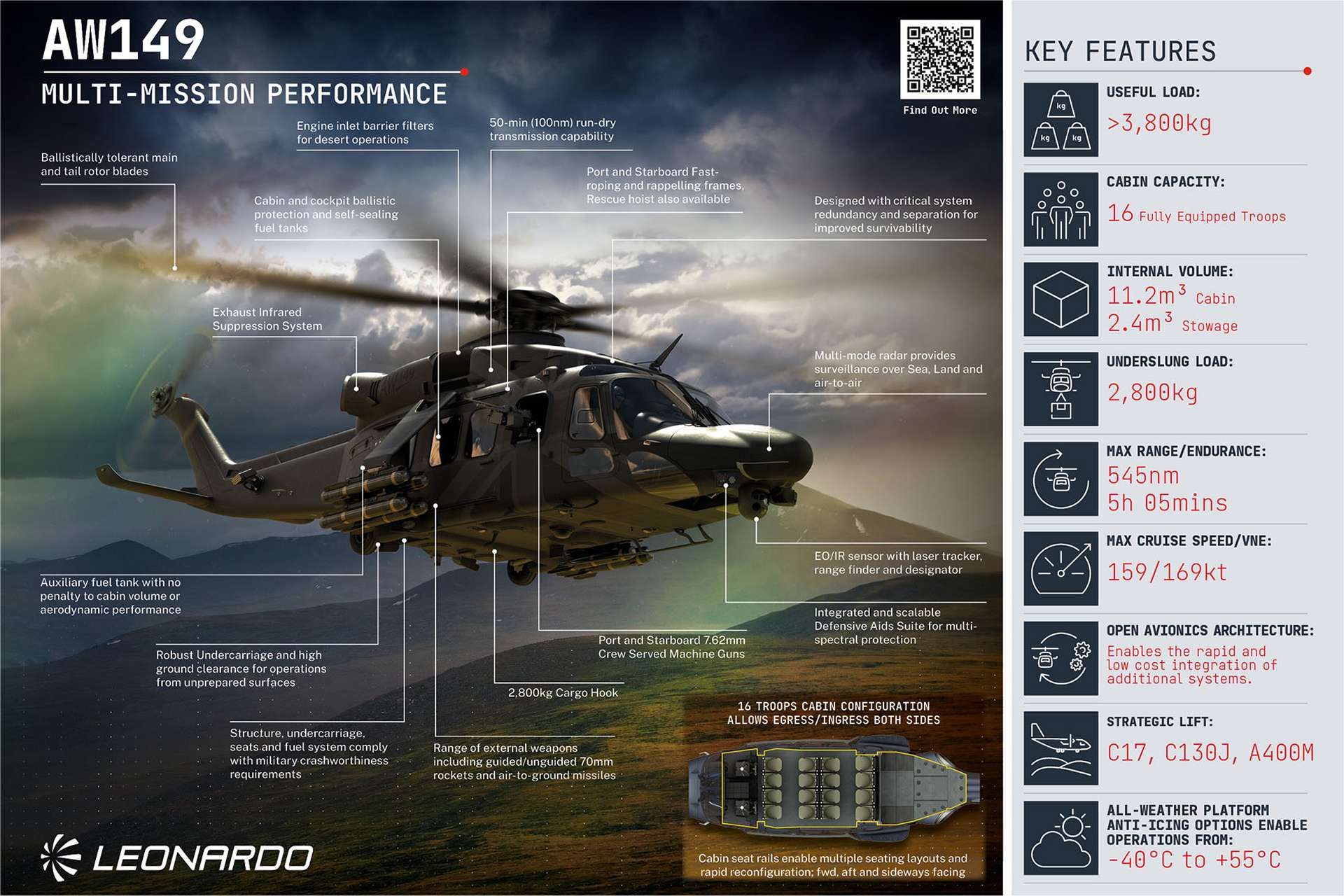Breaking News
UK's Aging Helicopter Military Fleet Set to Be Replaced by Leonardo's Robust AW149 Medium Helicopter.
In the context of the highly anticipated UK New Medium Helicopter (NMH) program, valued at $4 billion, Leonardo emerges as the sole contender following the withdrawal of its rivals, Airbus and Sikorsky. This development occurred after an initial selection in October 2022, which saw four major names in the aerospace industry vying for this lucrative contract. Leonardo proposed its AW149, a robust and versatile helicopter, while Airbus, in collaboration with Boeing, had put forward the H175M, tailored to the specific requirements of the MoD. Sikorsky, a subsidiary of Lockheed Martin, offered the renowned Black Hawk, known for its reliability and performance in various missions.
Follow Army Recognition on Google News at this link

Leonardo AW149UK Medium Helicopter (Picture source: Leonardo)
The withdrawal of Airbus and Sikorsky, attributed to various contractual reasons and the current market conditions, leaves Leonardo and its AW149 model alone in the race to replace an aging fleet of helicopters, including the Royal Air Force's Puma HC2, Bell 212, Griffin HAR2, and Dauphin AH1. These helicopters, although in service for over five decades, have been modernized but are nearing the end of their operational life.
The AW149 began life as an all-new, blank sheet of paper military design, focusing on survivability on the modern battlefield, operations from austere environments and maximising aircraft availability while minimizing through life costs.
The helicopters currently in service with the British fleet, such as the Puma HC2, Bell 212, Griffin HAR2, and Dauphin AH1, perform a diverse range of crucial missions for the UK Armed Forces. These aircraft are essential for rapid troop transport, often in conflict zones or hard-to-reach terrains, thus facilitating tactical and strategic operations. They also play a vital role in the rescue of personnel in combat zones, known as Combat Search and Rescue (CSAR) missions, as well as in medical evacuation (MEDEVAC) operations, where they quickly transport the injured to medical facilities.
Moreover, certain helicopters like the Dauphin AH1 are specially equipped to support special forces operations, providing a quick and agile platform for sensitive and high-risk missions. They are also used for surveillance and reconnaissance missions, gathering vital intelligence on enemy activities or for internal security operations.
Given these requirements, the New Medium Helicopter (NMH) program is designed not only to replace this aging fleet but also to improve and expand the operational capabilities of the British military. The NMH must offer significant improvements in terms of technology, payload capacity, operational range, and versatility. Particular emphasis will be placed on enhancing the aircraft's survivability in hostile environments, modernizing communication and navigation systems, and optimizing modularity to allow for quick configurations tailored to the specific needs of each mission. Thus, the NMH aims to provide a more effective and adaptable response to contemporary and future defense and security challenges.
Launched in the 2000s, the AW149 was specifically designed to meet the needs of armed forces in terms of performance, durability, and operational flexibility. The Leonardo's AW149 helicopter is equipped with powerful engines, allowing it to carry out missions in challenging conditions while carrying a heavier payload. Its robust design enables it to operate in environments ranging from desert zones to Arctic regions.
The Leonardo AW149 helicopter is specifically designed to excel in a variety of military missions, offering multi-mission performance thanks to advanced technical features. Capable of carrying up to 18 fully equipped soldiers or a substantial load, this helicopter is ideal for missions such as combat rescue (CSAR), troop transport, medical evacuation (MEDEVAC), and surveillance. The modern avionics, including a digital cockpit, enhance navigation and operation precision, even in low visibility conditions.
Equipped with engine air filters suited for desert operations, the AW149 also features main and tail rotor blades that are tolerant to ballistic impacts, essential for conflict zones. The cabin and cockpit benefit from ballistic protection, and self-sealing fuel tanks minimize risks in case of impact. An infrared exhaust suppression system reduces the aircraft's thermal signature, enhancing its survivability on the battlefield. The helicopter also has an auxiliary fuel tank that does not compromise the cabin volume or aerodynamic performance.
The AW149 features a robust landing gear and high ground clearance for operations on unprepared surfaces. Its transmission can operate without lubrication for 50 minutes over 100 nautical miles, providing reliability in emergencies. With a payload capacity of over 3,800 kg, it is equipped for fast-roping, rappelling, and has a rescue hoist. The cabin, which can accommodate up to 16 equipped soldiers, is modular with seat rails that allow various seating configurations.
The AW149's armament can include 7.62mm machine guns and rocket launchers. It is equipped with a 2,800 kg external cargo hook and a multi-mode radar for monitoring marine, terrestrial, and air environments. EO/IR sensors with laser tracking, rangefinder, and designator enhance its reconnaissance capabilities. An integrated and scalable defensive aids suite offers multi-spectral protection, and its open avionics architecture allows for the rapid and cost-effective integration of additional systems.
The AW149 can be strategically transported by aircraft such as the C17, C130J, and A400M. Designed to operate in extreme weather conditions from -40°C to +55°C thanks to its anti-icing options, the AW149 is an all-weather, flexible, and scalable platform, promising to significantly strengthen the UK's defense industry by committing Leonardo to localize up to 70% of its production and maintenance in the country.

Leonardo AW149UK Medium Helicopter (Picture source: Leonardo)


























